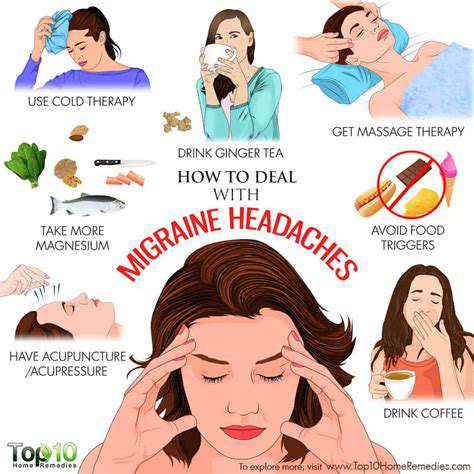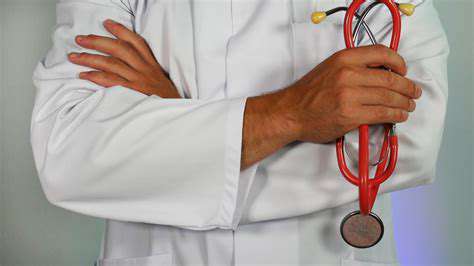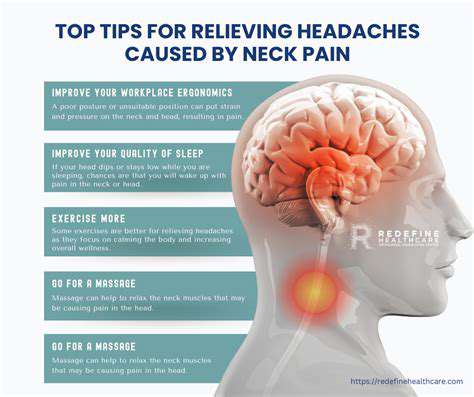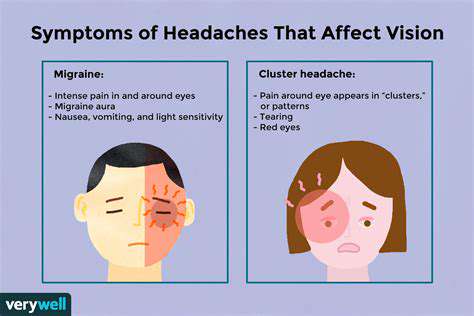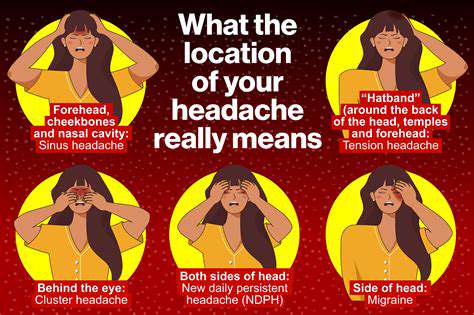The Power of Routine in Preventing Migraines
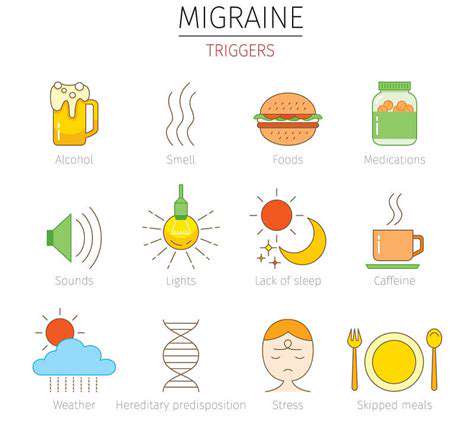
Understanding the Root Causes
Migraine triggers vary widely, often arising from environmental, dietary, and lifestyle influences. Pinpointing these triggers is essential for developing effective prevention strategies and managing migraine episodes. Recognizing personal triggers enables proactive lifestyle modifications that may decrease migraine frequency and intensity. Tracking patterns in your migraine occurrences remains crucial for identifying individual triggers. While uncovering these patterns requires time and careful observation, the effort often yields valuable insights.
Common triggers include sleep disturbances, stress, and specific dietary items. Maintaining a thorough migraine diary proves invaluable for spotting correlations between potential triggers and episodes. Recording details like timing, circumstances, and possible contributing factors creates a clearer picture of personal triggers over time.
Dietary Considerations and Lifestyle Factors
Certain foods and beverages frequently trigger migraines for many individuals. Processed foods, aged cheeses, and chocolate commonly appear on lists of potential dietary triggers. Monitoring food intake and noting connections to migraine episodes helps identify problematic items. Becoming aware of personal food sensitivities allows for more informed dietary choices.
Lifestyle factors significantly influence migraine occurrence. Stress, sleep deprivation, and weather changes often contribute to episodes. Establishing regular sleep patterns and developing effective stress management techniques form essential components of migraine prevention. Practices like yoga or meditation promote relaxation and lifestyle stability, potentially reducing migraine frequency.
Hydration status also affects migraine risk. Maintaining adequate fluid intake throughout the day helps prevent dehydration-related episodes. Regular physical activity provides additional benefits by regulating stress and promoting overall wellbeing, contributing to a more balanced lifestyle.
Environmental and Hormonal Influences
Environmental conditions frequently trigger migraines. Weather changes, particularly barometric pressure fluctuations, affect many migraine sufferers. Observing connections between environmental factors and episodes helps identify personal sensitivities.
Hormonal changes, especially in women, commonly influence migraine patterns. Menstrual cycles and hormonal medications often impact migraine frequency and severity. Understanding these hormonal relationships enables better symptom management.
Strong odors and scents trigger migraines for some individuals, making identification and avoidance crucial. Perfumes, chemicals, and food aromas may provoke episodes in sensitive people. Recognizing and minimizing exposure to problematic scents can significantly reduce migraine occurrence.
Optimizing Sleep for Migraine Prevention: Consistency is Key
Establishing a Consistent Sleep Schedule
Regular sleep patterns help regulate circadian rhythms, improving sleep quality and potentially reducing migraine triggers. Maintaining consistent bedtimes and wake times trains the body's internal clock, enhancing overall wellbeing. Disrupting sleep schedules on weekends can destabilize circadian rhythms, potentially increasing migraine vulnerability.
Quality sleep duration matters as much as consistency. Most adults benefit from 7-9 hours nightly. Maintaining this range supports physiological balance and may decrease migraine likelihood.
Creating a Relaxing Bedtime Routine
Developing calming pre-sleep rituals signals the body to prepare for rest. Warm baths, reading, or soothing music help transition into sleep. Optimizing bedroom conditions with dim lighting and comfortable temperatures enhances relaxation.
Minimizing stimulating activities before bed promotes better sleep. Electronic devices emit sleep-disrupting blue light that interferes with melatonin production. Establishing consistent wind-down routines facilitates easier sleep onset and more restorative rest.
Optimizing Your Sleep Environment
Sleep quality depends heavily on bedroom conditions. Dark, quiet, and cool environments promote melatonin production and uninterrupted sleep. Blackout curtains, earplugs, or white noise machines help create ideal sleeping conditions. Comfortable bedding supports restful sleep and reduces potential migraine triggers.
Temperature regulation significantly impacts sleep quality. Cooler rooms generally facilitate better sleep than warm environments. Adjusting bedding and room temperature prevents overheating during sleep.
Nourishing Your Body for Better Sleep
Dietary choices influence sleep quality. Balanced nutrition from fruits, vegetables, and whole grains supports healthy sleep patterns. Avoiding large meals, caffeine, and alcohol near bedtime prevents sleep disruption. Proper hydration throughout the day maintains optimal bodily functions, including sleep regulation.
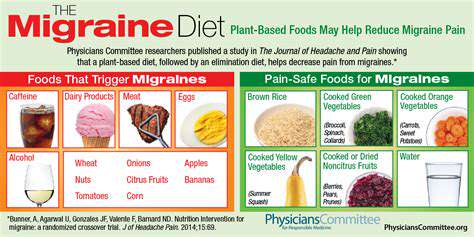
Managing Stress for Migraine Relief: Building a Stress-Resilient Routine
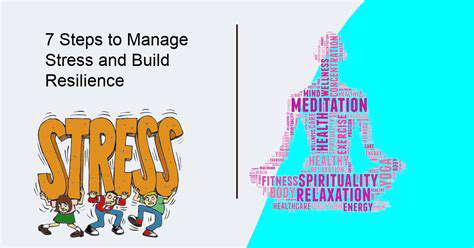
Understanding the Link Between Stress and Migraines
Stress significantly impacts migraine patterns. Chronic stress from various sources triggers physiological changes that may lead to migraines. Identifying personal stressors and developing coping strategies forms a critical part of migraine prevention. Stress hormones like cortisol contribute to inflammation, a known migraine trigger.
Stress affects the nervous system in complex ways, potentially activating pain pathways and altering brain chemistry. Individual stress responses vary based on genetic and personal factors, influencing migraine susceptibility.
Developing Healthy Coping Mechanisms
Effective stress management techniques help reduce migraine frequency and intensity. Regular exercise, including yoga and walking, decreases stress hormones and promotes relaxation. Mindfulness practices enhance awareness and stress management capabilities.
Consistent, quality sleep provides essential recovery from daily stressors. Combining regular sleep schedules with relaxation techniques improves sleep quality and reduces stress levels, potentially decreasing migraine occurrence.
Lifestyle Changes for Stress Reduction
Comprehensive lifestyle modifications support stress management. Balanced nutrition stabilizes energy levels and emotional wellbeing. Proper hydration maintains optimal bodily functions. Setting boundaries prevents overcommitment and reduces stress. Prioritizing enjoyable activities and social connections enhances overall resilience to stress.
Hydration and Movement: Essential Elements of a Migraine-Preventive Routine
Hydration: The Foundation of Well-being
Adequate hydration supports overall health and helps prevent migraines. Dehydration affects circulation and electrolyte balance, potentially triggering episodes. Regular water intake maintains physiological stability, reducing migraine risk.
Movement: A Powerful Tool for Prevention
Regular physical activity decreases migraine frequency by reducing stress, improving circulation, and releasing natural pain relievers. Consistent exercise promotes cardiovascular health and reduces inflammation, potentially decreasing migraine susceptibility.
Dietary Considerations for Migraine Management
Identifying and avoiding personal dietary triggers forms an important prevention strategy. Balanced nutrition from whole foods while limiting processed items helps maintain stable physiological conditions.
Stress Management Techniques for Migraine Relief
Chronic stress frequently triggers migraines. Relaxation practices like meditation and deep breathing help manage stress levels and promote wellbeing, potentially reducing migraine occurrence.
Sleep Hygiene: Restoring Balance for Migraine Prevention
Quality sleep supports physical and mental health while reducing migraine risk. Consistent sleep schedules, relaxing bedtime routines, and optimal sleep environments promote restorative rest and physiological balance.
